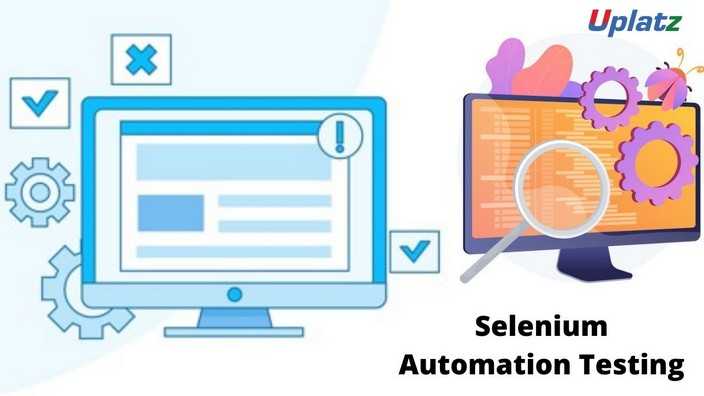Postman API
Learn Postman API concepts, development & testing. Postman is an API client that makes it easy for developers to create, share, test and document APIsPreview Postman API course
Price Match Guarantee Full Lifetime Access Access on any Device Technical Support Secure Checkout Course Completion Certificate 90% Started a new career
BUY THIS COURSE (
90% Started a new career
BUY THIS COURSE (GBP 12 GBP 29 )-
 81% Got a pay increase and promotion
81% Got a pay increase and promotion
Students also bought -
-

- API Testing
- 40 Hours
- GBP 12
- 589 Learners
-

- Bundle Ultimate - Software Testing (Manual - Automation - API)
- 90 Hours
- GBP 22
- 511 Learners
-

- Software Testing (Automation Testing with Selenium)
- 30 Hours
- GBP 12
- 2519 Learners

This course will show you the fundamentals of Postman, how you can issue requests, create automated API tests, and even document your API with Postman.
Postman is an application for API development environment which supports both SOAP and REST. API Testing has gained popularity these days because of evolution of Micro Services. Each components are made as web service and to test these web services we can make use of Postman to test RESTful APIs manually. In this you will learn from basics to intermediate concepts of API Testing using REST APIs using Postman.
Postman is an application programming interface (API) development tool that aids in the creation, testing, and modification of APIs. This utility has almost all of the features that a developer may want. Every month, over 5 million developers utilise it to make API development straightforward and easy. It is capable of making a variety of HTTP queries (GET, POST, PUT, PATCH), saving environments for later use, converting the API to code for various languages (like JavaScript, Python).
In this course offered by Uplatz you will learn to use the Postman software to send and receive requests, POST data to the server, and to try some other popular maneuvers
Course/Topic 1 - Course access through Google Drive
-
Google Drive
-
Google Drive
a).Create GET, POST, PUT, DELETE request
b).Understand GET vs POST request method
c).Work with real-world APIs (Github API, Trello API)
d).JavaScript basics for tests
e).Write API tests in Postman
f).Use data from Excel files (CSV) or JSON
g).Use Postman variables to create workflows and scenarios
h).Run API tests with Newman in Jenkins, GitLab CI or TeamCity
i).Use OAuth2, API keys, tokens, JWT, basic auth
j).Test file uploads
k).Use mock servers
l).Collaborate using Team Workspaces
This course is designed to provide participants with a comprehensive understanding of using Postman to interact with APIs, perform testing, and streamline the development process.
1).Course Title: Postman for API Testing and Development
Course Overview:
This course introduces participants to Postman, a powerful tool for API testing and development. Participants will learn how to create and manage API requests, perform testing and automation, and utilize advanced features of Postman to enhance their workflow.
Week 1: Introduction to APIs and Postman
Session 1: Overview of APIs
a).Introduction to APIs: Definition and importance
b).Understanding RESTful APIs: Principles and best practices
c).Overview of API terminology: Endpoints, methods (GET, POST, PUT, DELETE), and status codes
d).Introduction to Postman: Overview of features and benefits
Session 2: Getting Started with Postman
a).Installing Postman and navigating the interface
b).Creating a new workspace and understanding collections
c).Making your first API request: Setting up a GET request
d).Hands-on exercises: Sending requests and viewing responses
Week 2: Advanced API Requests and Testing
Session 3: Working with Different Request Types
a).Exploring various HTTP methods: GET, POST, PUT, DELETE, PATCH
b).Setting up request headers and body formats (JSON, XML, form-data)
c).Using query parameters and URL variables
d).Hands-on exercises: Creating requests with different methods and body types
Session 4: API Testing with Postman
a).Introduction to Postman testing features
b).Writing tests using JavaScript in Postman
c).Validating responses with assertions
d).Hands-on exercises: Creating and running tests for API responses
Week 3: Automation and Collaboration
Session 5: Automating API Testing
a).Introduction to Postman’s automation features
b).Creating test suites and using the Collection Runner
c).Integrating Postman with Continuous Integration/Continuous Deployment (CI/CD) pipelines
d).Hands-on exercises: Running automated tests and analyzing results
Session 6: Collaboration and Documentation
a).Sharing collections and environments with team members
b).Generating API documentation from Postman collections
c).Using Postman’s API network to discover and explore APIs
d).Hands-on exercises: Documenting APIs and sharing with collaborators
Week 4: Postman for API Monitoring and Best Practices
Session 7: Monitoring APIs with Postman
a).Overview of API monitoring features in Postman
b).Setting up monitors for automated checks on API performance and uptime
c).Analyzing monitoring results and alerts
d).Hands-on exercises: Creating and configuring API monitors
Session 8: Best Practices and Advanced Features
a).Best practices for API testing and documentation in Postman
b).Exploring advanced features: Environment variables, pre-request scripts, and mocks
c).Discussion on trends in API development and testing
d).Course wrap-up and Q&A session
Course Conclusion
Summary of key learnings
Guidance on further learning resources and Postman certification options
Learning Outcomes:
By the end of this course, participants will be able to:
a).Understand the fundamentals of APIs and their importance in modern development.
b).Use Postman effectively for API testing, automation, and documentation.
c).Write tests and validate API responses using Postman’s testing features.
d).Collaborate with teams and monitor API performance using Postman.
Target Audience:
a).Software Developers and Engineers
b).QA Engineers and Testers
c).Product Managers and Technical Writers
d).Anyone interested in learning about API development and testing
Prerequisites:
a).Basic understanding of web technologies and APIs
b).Familiarity with JavaScript is beneficial but not required
The Postman API Certification ensures you know planning, production and measurement techniques needed to stand out from the competition.
The Postman API allows you to programmatically access data stored in a Postman account with ease. The easiest way to get started with the API is to click the fork button to fork this collection to your own workspace and use Postman to send requests.
Postman is an application used for API testing. It is an HTTP client that tests HTTP requests, utilizing a graphical user interface, through which we obtain different types of responses that need to be subsequently validated.
Postman is an interactive and automatic tool for verifying the APIs of your project. Postman is a Google Chrome app for interacting with HTTP APIs. It presents you with a friendly GUI for constructing requests and reading responses. It works on the backend, and makes sure that each API is working as intended.
Postman can make HTTP calls using SOAP, a platform-agnostic messaging protocol specification, in addition to REST, GraphQL, and WebSocket requests. The following steps show how to make a SOAP request in Postman.
Uplatz online training guarantees the participants to successfully go through the Postman API Certification provided by Uplatz. Uplatz provides appropriate teaching and expertise training to equip the participants for implementing the learnt concepts in an organization.
Course Completion Certificate will be awarded by Uplatz upon successful completion of the Postman API online course.
The Postman API draws an average salary of $125,000 per year depending on their knowledge and hands-on experience.
Postman offers a comprehensive API testing tool that makes it easy to set up automated tests. You can aggregate the tests and requests you've created into a single automated test sequence.
Physically demanding and always understaffed. When you're out on delivery and it's not a busy day, it's great.
Note that salaries are generally higher at large companies rather than small ones. Your salary will also differ based on the market you work in.
a).SMTS Tester 1
b).Billing Operation Analyst.
c).Testing.Software Development Engineer(SDE)
Q1. What is Postman?
Ans.Postman is a free, HTTP Client based software application primarily used to perform API testing. It supports testing of HTTP requests by utilizing GUI (Graphical User Interface) which can be executed and the responses can be validated. It also helps in collaborating among the team members for the development of API by providing a platform to design, develop, test, and document APIs.
Q2. What is a collection in Postman?
Ans.A collection in Postman helps to group similar requests. It helps in systematically arranging the requests into folders.
Q3. Why do we use Postman?
Ans.We use Postman for the below reasons:
a) Firstly, Postman is free software that is useful for API testing.
b) It can send HTTP requests of various types (such as GET, POST, PUT, PATCH, etc) and gives the ability to save environments for future use.
c) It helps in managing the end-to-end lifecycle of the API - starting from design to mocking to testing and finally maintaining the APIs.
d) It provides Runtime Service that helps in managing API collections, environments, work-spaces, and different examples.
e) It can be used to easily integrate with CI/CD tools such as Jenkins.
f) Has extensive support from the community and provides extensive documentation.
Q4. How will you log variable values in Postman?
Ans.We can log the variable values in Postman in the console by using the command:
console.log(pm.variables.get("variable_name"));
Q5. How do you access postman variables?
Ans.It can be accessed by using the variable name as:{{variable_name}}
Q6. What are the various authorization methods provided by Postman?
Ans.Postman provides the below API request Authorization Options:
a) API Key
b) Bearer Token
c) Basic auth
d) Digest auth
e) Oauth 1.0
f) Oauth 2.0
g) Hawk Authentication
h) AWS Signature
i) NTLM Authentication
Q7. What are the different types of API requests supported in Postman?
Ans.Postman supports the following type of requests:
a) GET
b) POST
c) PUT
d) PATCH
e) DELETE
f) COPY
g) HEAD
h) OPTIONS
i) LINK
j) UNLINK
k) PURGE
l) LOCK
m) UNLOCK
n) PROPFIND
o) VIEW
Q8. How are Query Params different from Path Variables?
Ans.Path Variables are used for identifying specific resources and Query Parameters are used for sorting or filtering the resources.
Q9. What is Basic Auth in Postman?
Ans.Basic Auth in Postman is a type of authorization technique provided in Postman for HTTP user agents like web browsers. It provides fields to enter username and password which when entered gets associated with the request.
Q10. What is digest auth in Postman?
Ans.Digest Authorization is one of the authorization techniques provided by Postman. In this technique, the client first sends the request to the API and get responses from the server including a number which is usable only once, a realm value and 401 unauthorized response. We will be then sent back an encrypted data array having both username and password along with the data received from the server earlier. The server uses this data to generate an encrypted data string and compares this with what was sent for authenticating the request.









